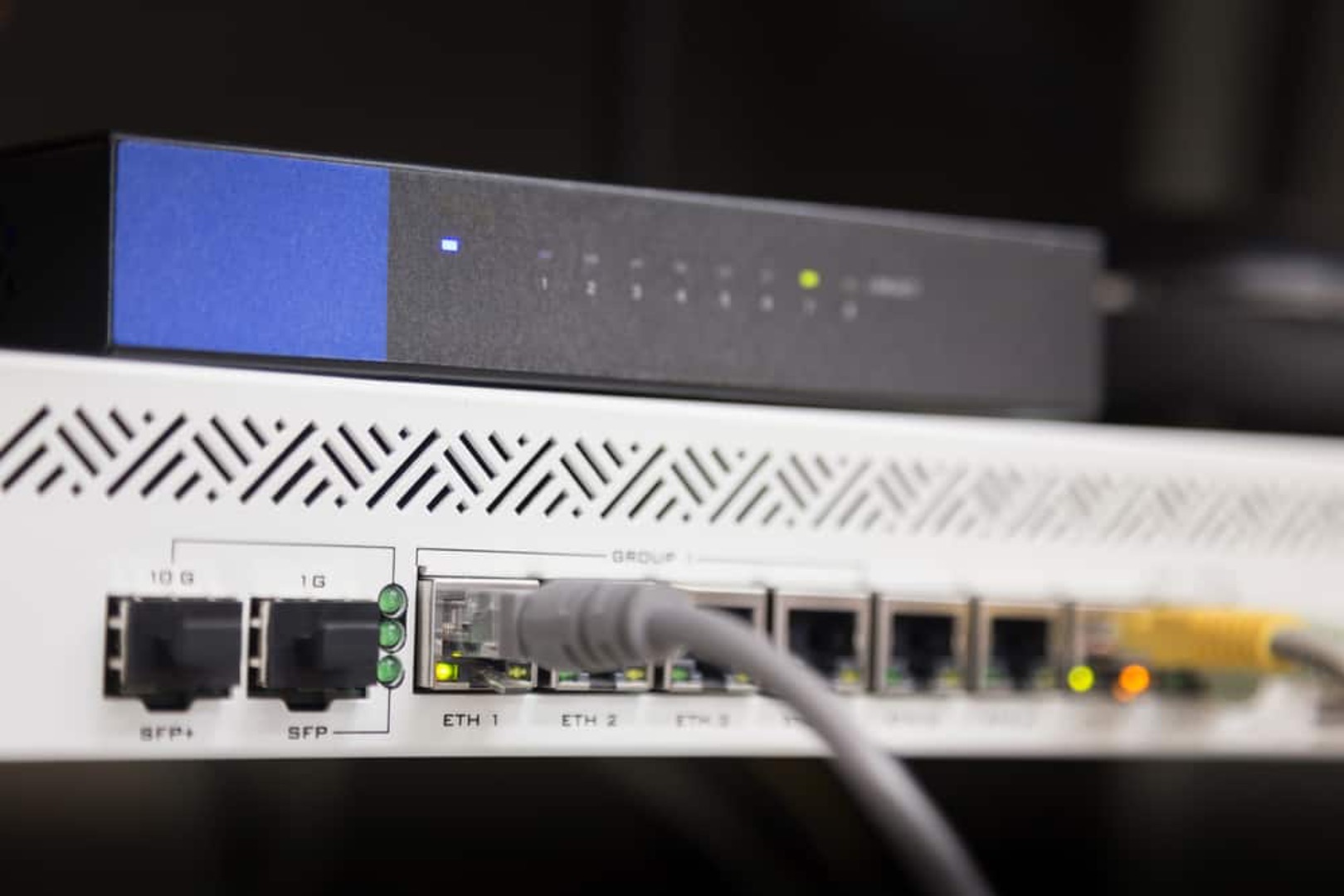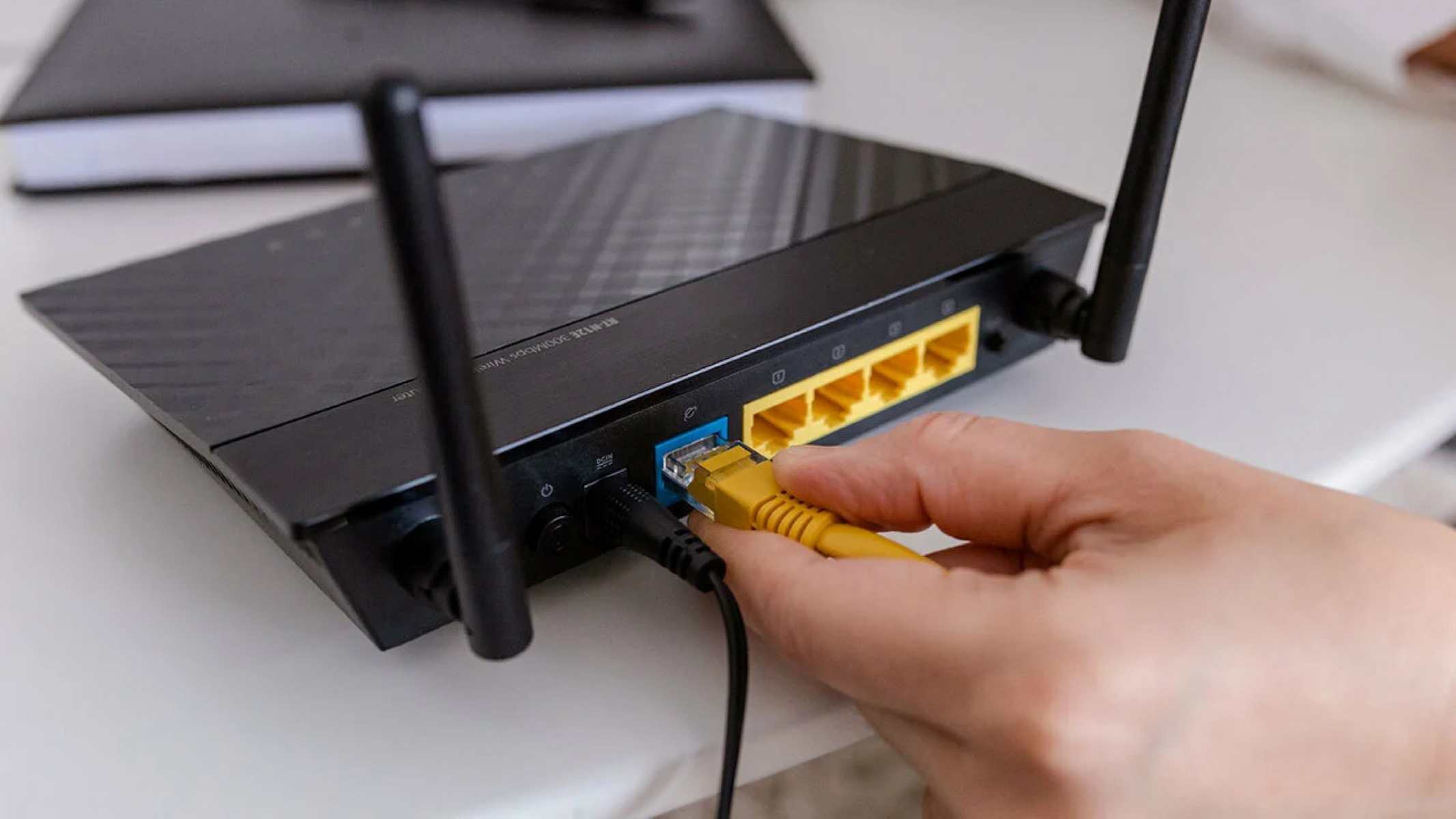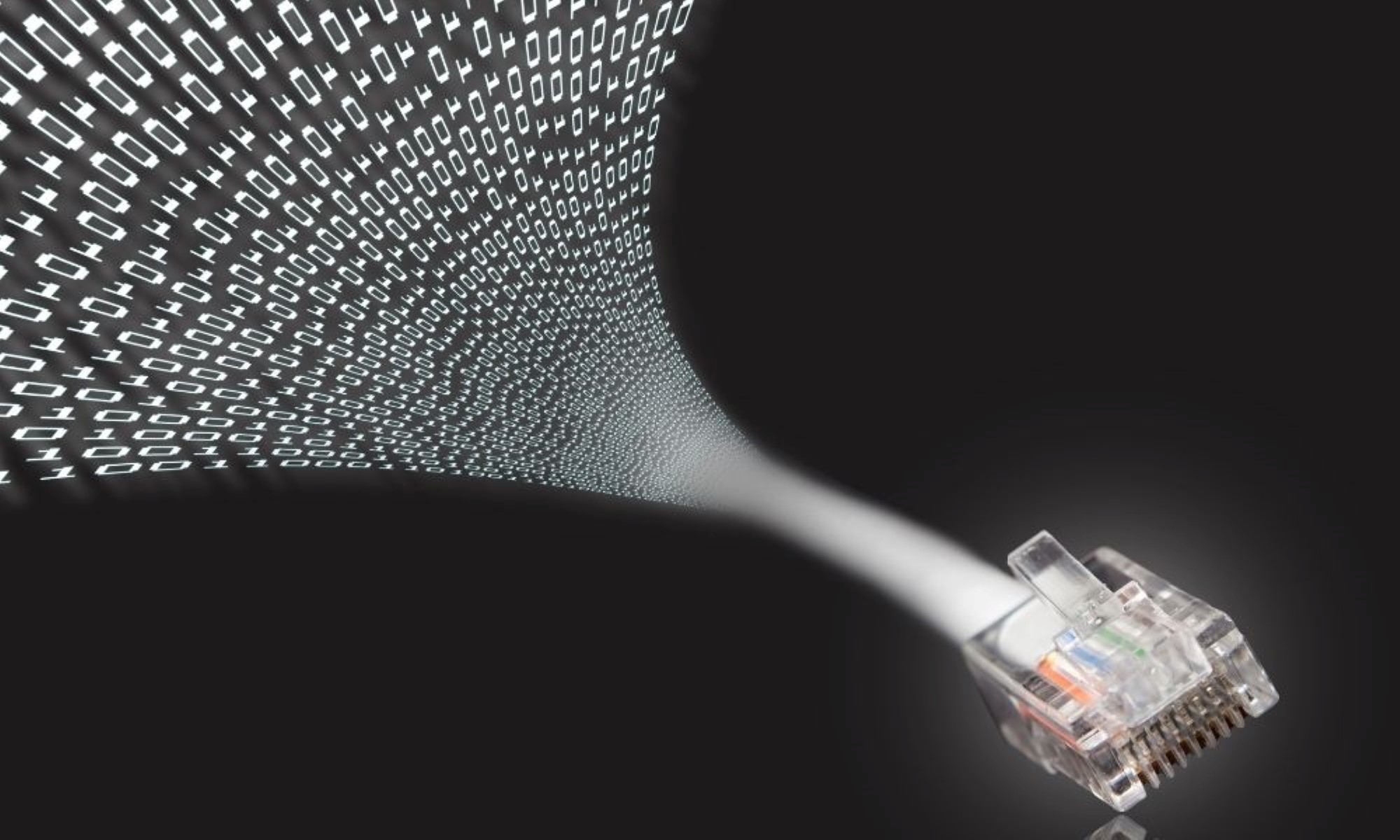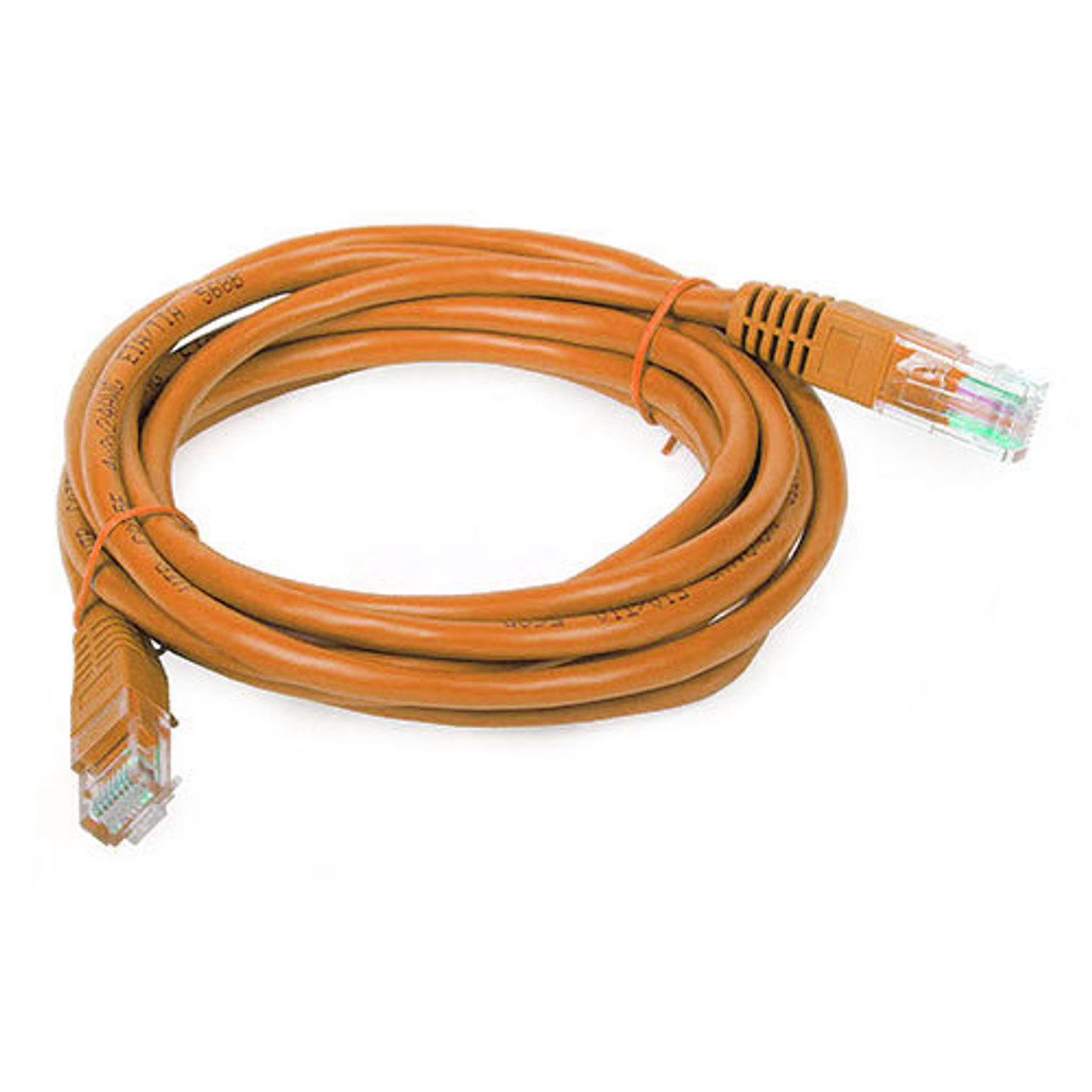Introduction
Welcome to the world of networking, where devices communicate with each other to share information, resources, and more. In this article, we'll delve into the realm of Cat5 network switches, exploring their functionality, benefits, and common uses. Whether you're a seasoned IT professional or a curious enthusiast, understanding the role of Cat5 network switches can empower you to optimize your network's performance and efficiency.
Cat5 network switches play a pivotal role in modern networking setups, facilitating seamless data transmission and communication among connected devices. These switches are integral components that enable multiple devices to interact within a network, ensuring smooth and efficient data flow. By exploring the intricacies of Cat5 network switches, you'll gain valuable insights into their operation and discover the myriad benefits they offer.
As we embark on this exploration, we'll unravel the inner workings of Cat5 network switches and shed light on their practical applications. Additionally, we'll delve into the advantages of utilizing these switches, empowering you to make informed decisions when implementing or upgrading network infrastructure. Whether you're seeking to enhance your home network or optimize your business's IT environment, understanding the role of Cat5 network switches is essential for achieving reliable and high-performing network connectivity.
Join us on this enlightening journey as we demystify the world of Cat5 network switches, providing you with the knowledge and understanding needed to harness the full potential of your network infrastructure. Let's dive into the fascinating realm of Cat5 network switches and unlock the power of seamless connectivity and data transmission.
What Is a Cat5 Network Switch?
A Cat5 network switch, also known as an Ethernet switch, is a fundamental networking device that enables the interconnection of multiple devices within a local area network (LAN). This switch operates at the data link layer of the OSI model, facilitating the efficient transfer of data between connected devices. Unlike hubs, which indiscriminately broadcast data to all connected devices, Cat5 network switches intelligently direct data packets only to the intended recipient, optimizing network performance and bandwidth utilization.
At its core, a Cat5 network switch serves as a central communication hub for devices such as computers, printers, servers, and other networked peripherals. By utilizing Category 5 (Cat5) Ethernet cables, these switches establish reliable and high-speed connections between devices, fostering seamless data exchange and collaboration.
One of the defining features of Cat5 network switches is their ability to provide full-duplex communication, allowing simultaneous data transmission and reception. This capability enhances network efficiency and throughput, enabling devices to communicate with minimal latency and optimal performance.
Furthermore, Cat5 network switches come in various configurations, including unmanaged, managed, and smart switches. Unmanaged switches are plug-and-play devices that require minimal configuration, making them ideal for small home or office networks. Managed switches offer advanced configuration options, allowing network administrators to exert greater control over network traffic, security, and Quality of Service (QoS). Smart switches combine elements of both unmanaged and managed switches, providing essential management features while remaining easy to deploy and maintain.
Understanding the role of Cat5 network switches is crucial for building robust and scalable network infrastructures. These switches form the backbone of modern LAN environments, enabling seamless communication and data exchange among connected devices. As we continue our exploration, we will delve deeper into the functionality and operation of Cat5 network switches, unraveling the mechanisms that underpin their essential role in networking.
How Does a Cat5 Network Switch Work?
Understanding the inner workings of a Cat5 network switch unveils the intricate processes that drive efficient data transmission and device communication within a network. At its essence, a Cat5 network switch operates by intelligently managing and directing data traffic, ensuring that information reaches its intended destination with optimal speed and reliability.
When a device connected to a Cat5 network switch transmits data, the switch examines the data packet’s destination address, known as the Media Access Control (MAC) address. Unlike traditional network hubs that broadcast data to all connected devices, a Cat5 network switch uses this MAC address information to selectively forward the data packet only to the port where the intended recipient device is located. This intelligent forwarding process, known as packet switching, prevents unnecessary data propagation and minimizes network congestion, resulting in enhanced performance and reduced latency.
Moreover, Cat5 network switches support full-duplex communication, allowing devices to simultaneously send and receive data without contention. This capability is achieved through dedicated communication channels, enabling seamless bidirectional data exchange between devices. As a result, network throughput is maximized, and devices can engage in efficient, real-time communication without the limitations of half-duplex transmission.
Furthermore, managed and smart Cat5 network switches offer advanced features such as Virtual LANs (VLANs), Quality of Service (QoS) prioritization, and port mirroring. VLANs enable network segmentation, allowing administrators to logically isolate groups of devices for enhanced security and traffic management. QoS prioritization ensures that critical data, such as voice or video streams, receives preferential treatment, optimizing network performance for essential applications. Port mirroring facilitates network monitoring and analysis by duplicating data traffic from one port to another, enabling administrators to inspect network activity for diagnostic or security purposes.
By orchestrating the intelligent routing and management of data traffic, Cat5 network switches form the cornerstone of efficient and reliable network communication. Their ability to optimize data transmission, minimize network congestion, and provide advanced management features empowers organizations and individuals to build robust and high-performing network infrastructures.
Benefits of Using a Cat5 Network Switch
Employing Cat5 network switches in networking environments offers a myriad of benefits that contribute to the seamless operation, performance, and security of interconnected devices. These switches play a pivotal role in optimizing network connectivity and data exchange, empowering users to leverage advanced networking capabilities while enhancing overall efficiency.
- Enhanced Performance: Cat5 network switches facilitate full-duplex communication, allowing devices to simultaneously send and receive data at high speeds. This capability maximizes network throughput, minimizes latency, and fosters efficient real-time communication among connected devices.
- Improved Bandwidth Utilization: By selectively forwarding data packets based on MAC addresses, Cat5 network switches prevent unnecessary data propagation and reduce network congestion. This intelligent traffic management optimizes bandwidth utilization and ensures that network resources are efficiently allocated.
- Network Segmentation and Security: Managed Cat5 network switches support Virtual LANs (VLANs), enabling network segmentation to enhance security and streamline network management. VLANs allow administrators to isolate and secure groups of devices, mitigating the risk of unauthorized access and potential security breaches.
- Quality of Service (QoS) Prioritization: Cat5 network switches with QoS capabilities enable administrators to prioritize specific types of network traffic, ensuring that critical data, such as voice or video streams, receives preferential treatment. This prioritization enhances the user experience for essential applications and services.
- Centralized Management and Control: Managed and smart Cat5 network switches offer advanced management features, allowing administrators to exert granular control over network traffic, security policies, and device configurations. This centralized management capability streamlines network administration and facilitates efficient troubleshooting and optimization.
By harnessing the benefits of Cat5 network switches, organizations and individuals can establish robust and high-performing network infrastructures that cater to the demands of modern connectivity. These switches serve as indispensable tools for optimizing network performance, enhancing security, and enabling seamless communication and data exchange across diverse networking environments.
Common Uses of Cat5 Network Switches
Cat5 network switches find widespread application across various networking scenarios, serving as essential components that facilitate efficient data transmission, device connectivity, and network management. Their versatility and functionality make them indispensable in diverse environments, ranging from small home networks to large-scale enterprise infrastructures.
- Home Networking: In home networking setups, Cat5 network switches enable the seamless interconnection of devices such as computers, printers, smart TVs, gaming consoles, and network-attached storage (NAS) devices. These switches foster reliable data exchange and collaboration among household devices, enhancing the overall connectivity and accessibility of network resources.
- Small Office/Home Office (SOHO) Environments: Small businesses and home offices benefit from the use of Cat5 network switches to establish efficient and scalable network infrastructures. These switches facilitate the connection of workstations, servers, printers, and other essential devices, enabling streamlined communication and resource sharing within the organizational context.
- Enterprise Networks: In large-scale enterprise environments, Cat5 network switches form the backbone of complex networking architectures. They provide the connectivity and management capabilities necessary to support a multitude of devices, including computers, servers, IP phones, wireless access points, and network-attached storage arrays. These switches enable seamless data exchange, network segmentation, and centralized management, contributing to the robustness and reliability of enterprise networks.
- Educational Institutions: Schools, colleges, and universities leverage Cat5 network switches to create resilient and high-performing network infrastructures that support the connectivity needs of students, faculty, and administrative staff. These switches facilitate the deployment of networked learning resources, administrative systems, and collaborative platforms, fostering a conducive environment for educational activities and information exchange.
- Industrial and Commercial Applications: Cat5 network switches play a vital role in industrial automation, manufacturing, and commercial settings, where reliable and secure network communication is essential. They enable the connectivity of control systems, surveillance cameras, access control devices, and other networked equipment, contributing to the efficient operation and management of industrial and commercial facilities.
By catering to a diverse array of networking needs, Cat5 network switches empower users to establish resilient, high-speed, and secure network environments that support the demands of modern connectivity. Whether in residential, business, educational, or industrial settings, these switches serve as indispensable tools for fostering efficient data exchange, collaboration, and resource accessibility across interconnected devices.
Choosing the Right Cat5 Network Switch
When selecting a Cat5 network switch for a specific networking environment, several key considerations come into play to ensure that the chosen switch aligns with the unique requirements and performance expectations of the network. By evaluating factors such as switch type, port density, management capabilities, and future scalability, individuals and organizations can make informed decisions that optimize network functionality and support future growth.
- Switch Type: The choice between unmanaged, managed, or smart switches hinges on the level of control and configurability required for the network. Unmanaged switches are suitable for simple, plug-and-play setups, while managed and smart switches offer advanced features such as VLAN support, QoS prioritization, and remote management capabilities.
- Port Density: Assessing the number of devices that need to be connected to the switch is crucial for determining the required port density. Switches with varying port counts are available, ranging from compact 5-port switches for small networks to high-density switches with 48 or more ports for enterprise environments.
- Speed and Compatibility: Cat5 network switches are available in different speed variants, including Fast Ethernet (10/100 Mbps) and Gigabit Ethernet (10/100/1000 Mbps). Choosing a switch with the appropriate speed capabilities ensures that the network can accommodate the data transfer requirements of connected devices. Additionally, verifying compatibility with existing network infrastructure, such as routers and access points, is essential for seamless integration.
- Power over Ethernet (PoE) Support: For environments requiring the power delivery capability of PoE, selecting switches with PoE support is advantageous. PoE switches can power devices such as IP cameras, VoIP phones, and wireless access points over the Ethernet cabling, eliminating the need for separate power sources at the device location.
- Future Scalability: Anticipating future network expansion and device additions is critical when choosing a Cat5 network switch. Opting for a switch with additional ports or modular expansion options can accommodate future growth without necessitating a complete switch replacement.
By carefully evaluating these factors and aligning them with the specific networking requirements, individuals and organizations can make informed choices when selecting Cat5 network switches. This proactive approach ensures that the chosen switches effectively meet current needs while providing the flexibility to adapt to evolving network demands and technological advancements.
Conclusion
As we conclude our exploration of Cat5 network switches, it becomes evident that these fundamental networking devices play a pivotal role in enabling efficient data transmission, device connectivity, and network management. From their ability to intelligently route data traffic to their support for full-duplex communication and advanced management features, Cat5 network switches form the backbone of modern networking infrastructures, catering to a diverse array of residential, commercial, and industrial networking needs.
By understanding the functionality and benefits of Cat5 network switches, individuals and organizations can make informed decisions when deploying, expanding, or upgrading their network infrastructures. The versatility and performance-enhancing capabilities of these switches empower users to create resilient, high-speed, and secure network environments that foster seamless communication, collaboration, and resource accessibility among interconnected devices.
Whether in the context of home networking, small office environments, large-scale enterprise networks, educational institutions, or industrial applications, Cat5 network switches serve as indispensable tools for optimizing network performance, enhancing security, and supporting the demands of modern connectivity. Their role in facilitating efficient data exchange, network segmentation, and centralized management underscores their significance in the realm of networking technology.
As networking technologies continue to evolve and connectivity requirements become increasingly sophisticated, the foundational principles and capabilities of Cat5 network switches remain essential for building robust and scalable network infrastructures. Their enduring relevance and adaptability position them as enduring components that continue to drive the seamless operation and connectivity of interconnected devices in the digital age.
In conclusion, the pervasive influence of Cat5 network switches in networking environments underscores their indispensable role in shaping the modern landscape of connectivity and data exchange. By harnessing their capabilities and understanding their diverse applications, individuals and organizations can embark on a journey of network optimization and reliability, ensuring that their connectivity needs are met with efficiency, security, and future-ready performance.

























